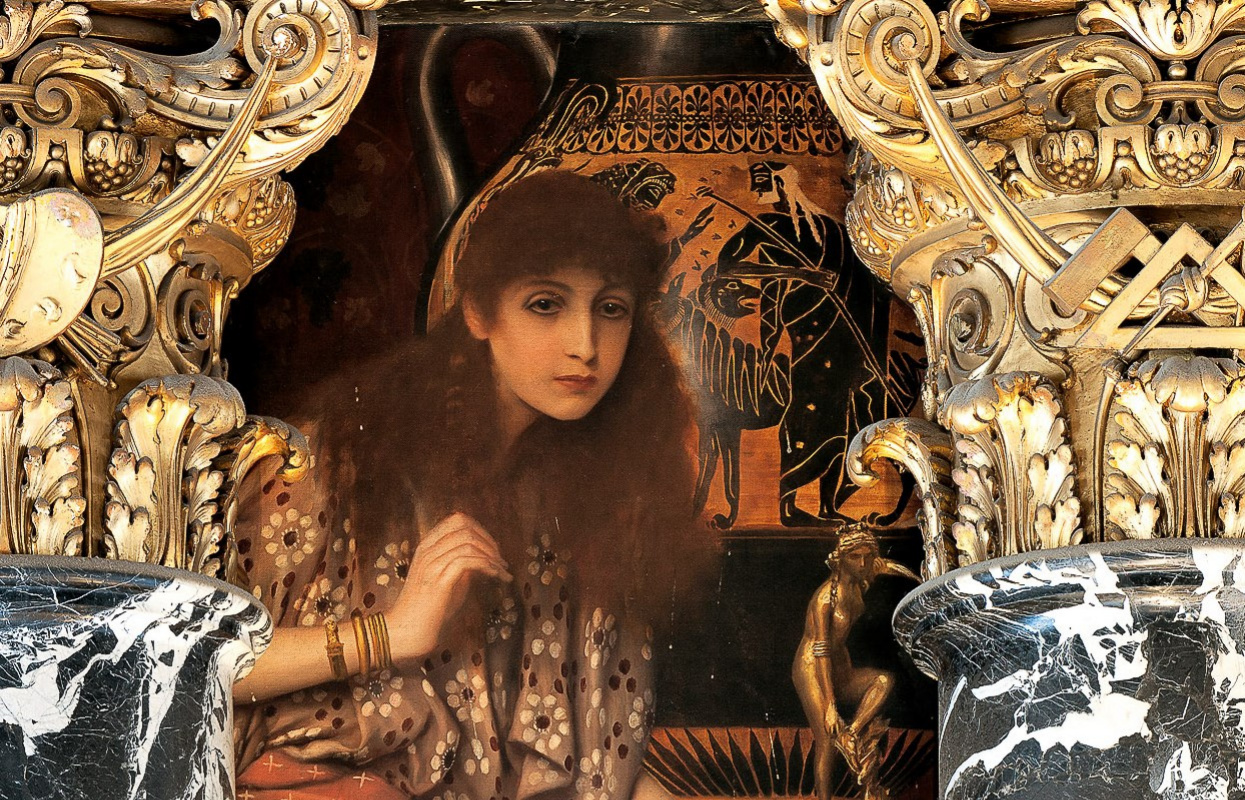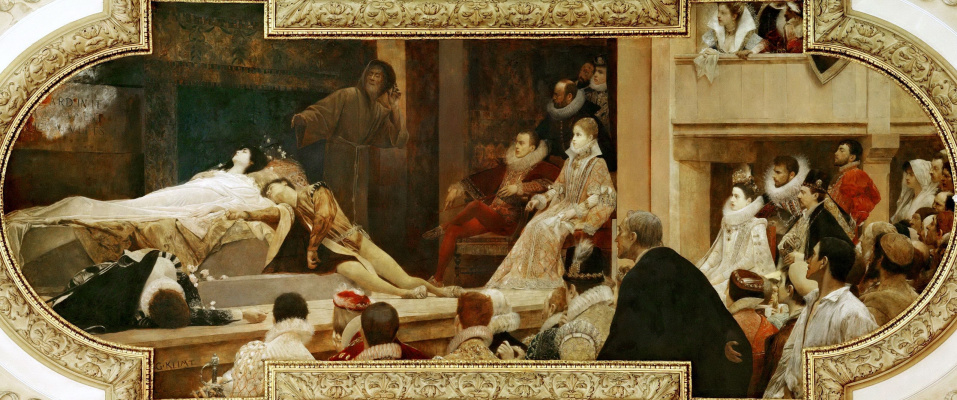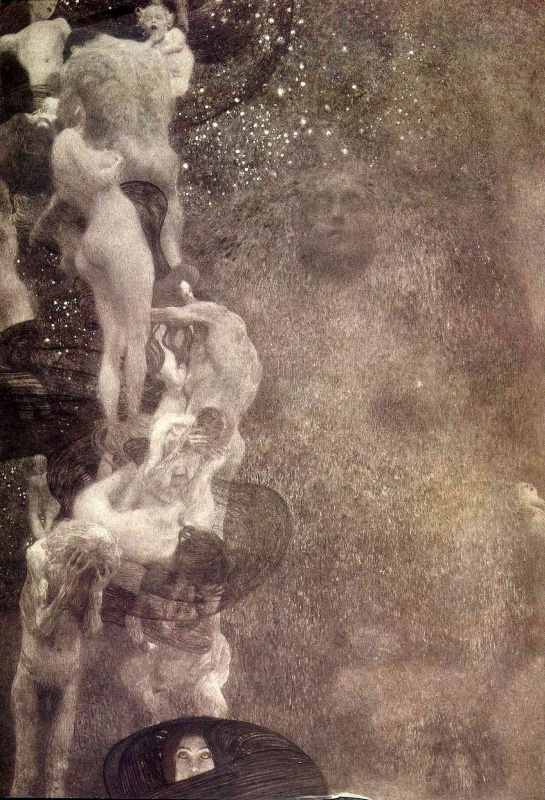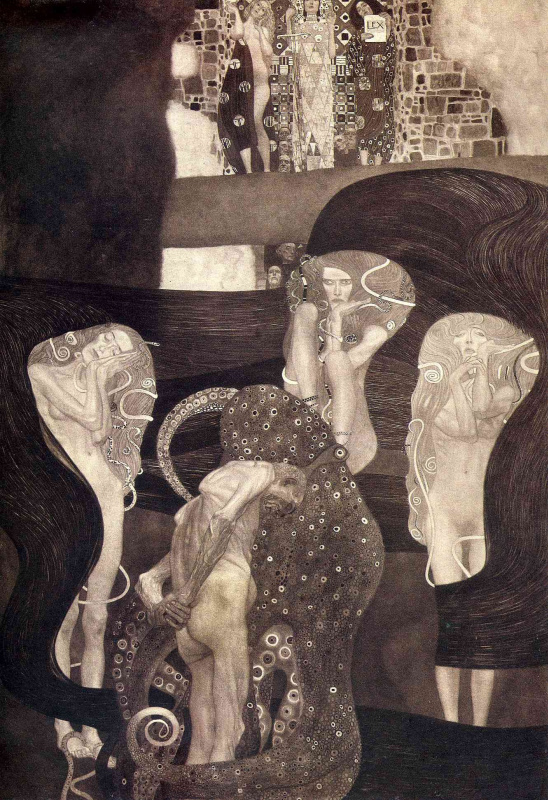To mark the centenary of the death of Gustav Klimt, the museum offers its visitors to take a closer look at his unique paintings, dispayed at a height of 12 meters. At the same time as the Klimt Bridge, Klimt’s large-scale painting "Nuda Veritas" is also on display in the Collection of Greek and Roman Antiquities of the Museum. It comes from the estate of the critic Hermann Bahr and is being exhibited for the first time in the hall of Doryphoros of the Polykleitos in the context of ancient artworks.

While these paintings can usually only be seen from a considerable distance, they can currently be viewed up close and personal: the Kunsthistorisches Museum has set up a large staircase and bridge, weighing four tons, that allows visitors a remarkably intimate view of these often-overlooked paintings depicting the important periods of art history.

© KHM-Museumsverband

The museum had commissioned a series of forty paintings, featuring different periods of art from Ancient Egypt to the 18th century. But until now the museum’s 1.4 million annual visitors could only admire the paintings from afar.

In 1888, Klimt received the Golden order of Merit from Emperor Franz Josef I of Austria for his contributions to murals painted in the Burgtheater in Vienna.
Gustav Klimt contributed a total of thirteen paintings. All were executed in oil on canvas in the Company of Artists' communal studio; in 1891, six months before the formal opening of the museum, they were glued to the wall of the main staircase.

© KHM-Museumsverband
The North Wall

The north wall of the Main Staircase of the Kunsthistorisches Museum Vienna
1890/91
© KHM-Museumsverband

All frescoes made by Klimt were signed "G.K.", as between the columns on the left, 1890/91. These works have features that would become characteristic of the artist’s style: decorativeness, linearity, propensity to ornamentalization. And, of course, Klimt loved women, which was reflected in his work. They say that at first he painted a naked female figure in the picture, and then "dressed" her.
Left: Gustav Klimt. Ancient Greece II (Pallas Athena), 1890/91. © KHM-Museumsverband

Klimt stressed Italy’s importance for artistic development with three depictions: the first one is a painting of Ecclesia — the personification of the Catholic Church (below). She refers to Rome by holding the pontifical tiara. The reference to Venice is made by the depiction of a Doge.
Klimt’s Ecclesia is female, young and completely covered but for the chaste purity of her face and her slender hands. Richly embroidered with the scenes from the life of Christ, her cope envelops her completely without even a hint of the contours of her body. Ecclesia’s symbols and attributes are the pope’s threetiered tiara and the pontifical cross.

- Gustav Klimt. Early Italian Painting. Painting in the pendentive on the north wall of the Main Staircase of the Kunsthistorisches Museum Vienna, 1890/91. © KHM-Museumsverband
- Gustav Klimt. Early Italian Painting. Painting in the pendentive on the north wall of the Main Staircase of the Kunsthistorisches Museum Vienna, 1890/91. © KHM-Museumsverband
The West Wall
- Gustav Klimt. David. Painting in the pendentive on the west wall of the Main Staircase of the Kunsthistorisches Museum Vienna, 1890/91. © KHM-Museumsverband
- Gustav Klimt. Venus. Painting in the pendentive on the west wall of the Main Staircase of the Kunsthistorisches Museum Vienna, 1890/91. © KHM-Museumsverband
Clearly outlined, David is a strong, self-assured and determined young man; in his left hand he clasps the bloody sword with which he has just beheaded Goliath.

In 1905 Klimt found himself forced to buy back the three canvases from the University of Vienna after the outrage sparked by their "provocative" nature.

Concurrently with the Klimt Bridge, the Kunsthistorisches Museum is showcasing one of Gustav Klimt’s masterpieces: his celebrated Nuda Veritas (1899). The painting comes from the estate of the critic Hermann Bahr, a dedicated friend and defender in print of the Vienna Secessionists. With its first-ever visit to the Collection of Greek and Roman Antiquities — where it is displayed in the gallery housing Polykleitos' Doryphoros — the painting creates a novel and fascinating space of aesthetic experience.
Left: Gustav Klimt. Nuda Veritas, 1899.

















